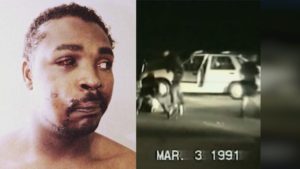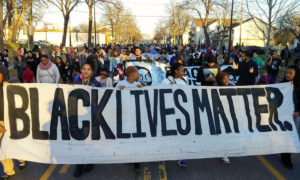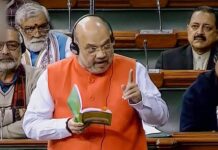On 25 May 2020, George Floyd was arrested on accusation of using counterfeit money. A video of the arrest, documenting the police officer leaning on Floyd’s neck with his knee, choking him, while bystanders pleaded for his life. Floyd begged for his life saying he could not breathe and became unconscious after 3 minutes.
In every country, the criminal justice system carries the weight of history. In India, the police and jailing system works to preserve the social order instilled in the colonial era. That means it is used to protect the status quo, secure private interests, prevent public agitation and suppress movements of self-determination and dignity.
Slavery to Covert systems of Oppression
In America, the criminal justice system became a codification of white supremacy and is used to preserve the oppressive aspects of slavery and domination over the African American people.

After the abolition of slavery, the American state began to pass laws to ensure the social subordination of African Americans. These laws are mostly remembered as Jim Crow Laws. These laws were overturned in the 1960s. Starting from the 1970s, racism changed in the United States by moving to more aggressive systems of policing. Laws, housing systems, and local law enforcement tactics changed to ensure that African Americans were criminalized at mass rates to effectively suppress the community as a whole.
In the 1980s and 1990s, many prominent American politicians started pushing for reforms that would increase the policing of African American communities. In the 1990s, it was noted that while crime rates in America went down, state violence and incarceration rates of African Americans went up. Today, nearly three people are killed by police every day. African Americans are 2.5 times more likely to be killed than white Americans.
The violence against African Americans was initially hidden from the rest of the country, making the discussion of systemic reforms difficult.

A combination of mass support caused by the civil rights movements of the 1960s and America’s concern of its international in the time after the Cold War meant that overt systems of discrimination and explicit language had to make way to more coded systems of oppression.
For example, the American president in the 1980s, Ronald Reagan, said that he would put an end to welfare queens. While it is not clear what the term welfare queen means to an outsider, it would conjure an image of a single black woman, who would keep having children to collect money from the state. Using this rhetoric, Reagan cut many welfare programs that tended to benefit African Americans, while subsidy programs that benefited White Americans remained untouched. During the 1980s, political programs aimed to target crime, reduce drug use, and reduce state expenditure was filled with double meanings with racist subtext.
Seen, but not heard: A History of recordings without conviction
The national conversation changed dramatically in 1991 with the Rodney King trial. On 3 March 1991, Rodney King a construction worker, was violently beaten him on the street. A salesman, George Holliday, lived on a balcony overseeing the event. He took his video camera recorded the assault and sent the video to a television station. The clips from the 12-minute recording became news across the country and showcased police violence against the African American community.

Even though the video provoked such national outrage, on 29 April, all four police officers were found to be not guilty. Hours after the acquittal was announced, riots broke out in Los Angeles, and lasted for nearly six days.
Within the African American community, stories of police brutality are common. Since the 1980s, there has been a call for a movement, like the 1960s Civil Rights movement, to address the new problems the community are facing. This includes working on oppression aligned to race, like patriarchy, class, housing, inequality, and of course, violence by the state.
#BlackLivesMatters is born


In February 2013, Treyvon Martin, an unarmed African American child was shot and killed by George Zimmerman. Zimmerman defended himself by claiming that Martin was dressed in a hooded sweater and looked threatening. Zimmerman claimed self-defence, making use of a law that allowed that suspicious behaviour alone could be grounds for self-defence. After a trial, he was deemed not guilty. After the trial, the hashtag #BlackLivesMatter trended on Twitter, leading to the origin of the name Black Lives Matter as the name of the movement.
Videos of Murders by Police Continue
In July 2014, a video circulated on social media of a team of police officers choking a street vendor named Eric Garnder to death. Garner was arrested for selling loose cigarettes. The video of his murder makes it clear that he was not acting violently and that he had faced regular harassment. His last words, captured on video were:

“Every time you see me, you want to harass me. You want to stop me selling cigarettes. I’m minding my business, officer, I’m minding my business. Please just leave me alone. I told you the last time, please just leave me alone. Please please, don’t touch me. I can’t breathe. I can’t breathe. I can’t breathe. I can’t breathe. I can’t breathe. I can’t breathe. I can’t breathe. I can’t breathe.”
These words were said as Eric Garner was wrestled to the floor, and choked to death.
Also Read: Black Lives Matter: Protests across the US over the murder of George Floyd
Movements like Black Lives Matter have pointed out that despite these well-documented and clear cases of violence against helpless African Americans, there are few consequences for those who engage in such violence. Like with lynching victims in India today, the victims are treated like criminals, and the murders are treated as social problems. Geroge Floyd is the latest case of a well-documented murder of an African American happening in broad daylight. The riots that follow are a cry against a system that has oppressed the community for decades.




























[…] Losing the Race for Justice: How the Police system shapes America […]
[…] Read Next: Losing the Race for Justice: How the Police system shapes America […]
[…] Also Read: Losing the Race for Justice: How the Police system shapes America […]